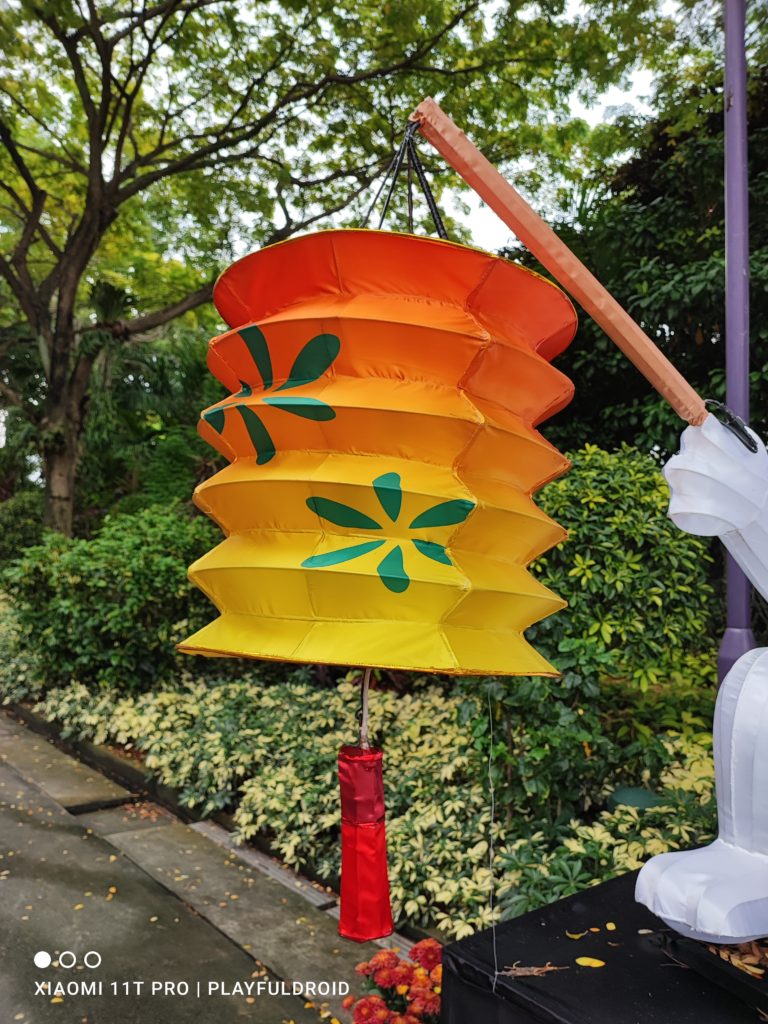Xiaomi recently made headlines after global technology market analyst film Canalys announced that the Chinese smartphone giant had surpassed Apple as the second largest smartphone vendor during the second-quarter of the year.
While others may take some time off to celebrate such joyous occasion, but that’s certainly not the case for Xiaomi. The company simply has no time for complacency, and is instead working doubly hard to cement its place as the second largest smartphone brand in the global market.
Xiaomi’s most recent flagship launch – Xiaomi 11T Pro 5G – is the company’s latest attempt to expand it’s presence in the higher-end segment of the smartphone market which was previously dominated by Samsung and Apple.
Just like last year’s Xiaomi Mi 10T Pro 5G (Review), the new Xiaomi 11T Pro 5G continues to position itself within a comparatively more accessible price point as the company presses on it’s pursue to bring flagship experience to a wider audience.
Priced at S$799 (US$591), the Xiaomi 11T Pro is no doubt the most affordable Snapdragon 888-powered smartphone in Singapore. However, does the phone cuts any corner to achieve such attractive price point? Let’s find out in our Xiaomi 11T Pro 5G Review!
Design
Xiaomi had given the new Xiaomi 11T Pro a rather significant facelift to the rear side of the phone which now features a redesigned camera island with lenses arranged vertically-stacked fashion.
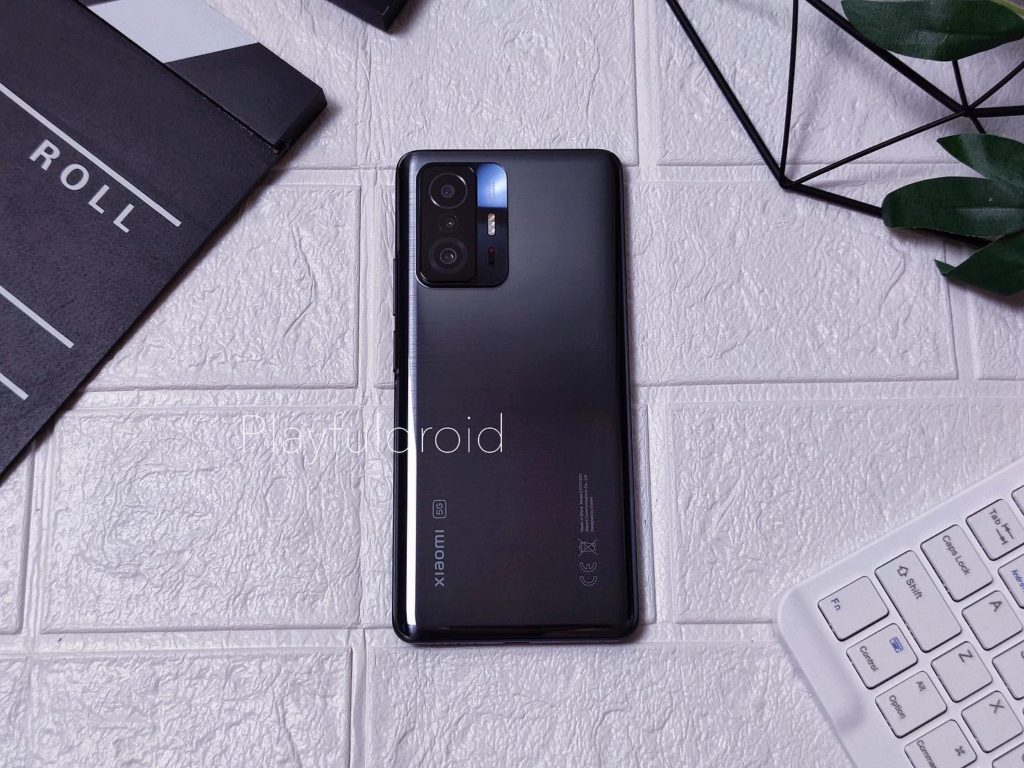
Like any other Xiaomi smartphones, the Xiaomi 11T Pro sticks with the usual dual-curve rear design which supposedly makes the phone easier to hold especially with one hand in order to allow users (including myself) to better take advantage of MIUI’s single-handed mode.
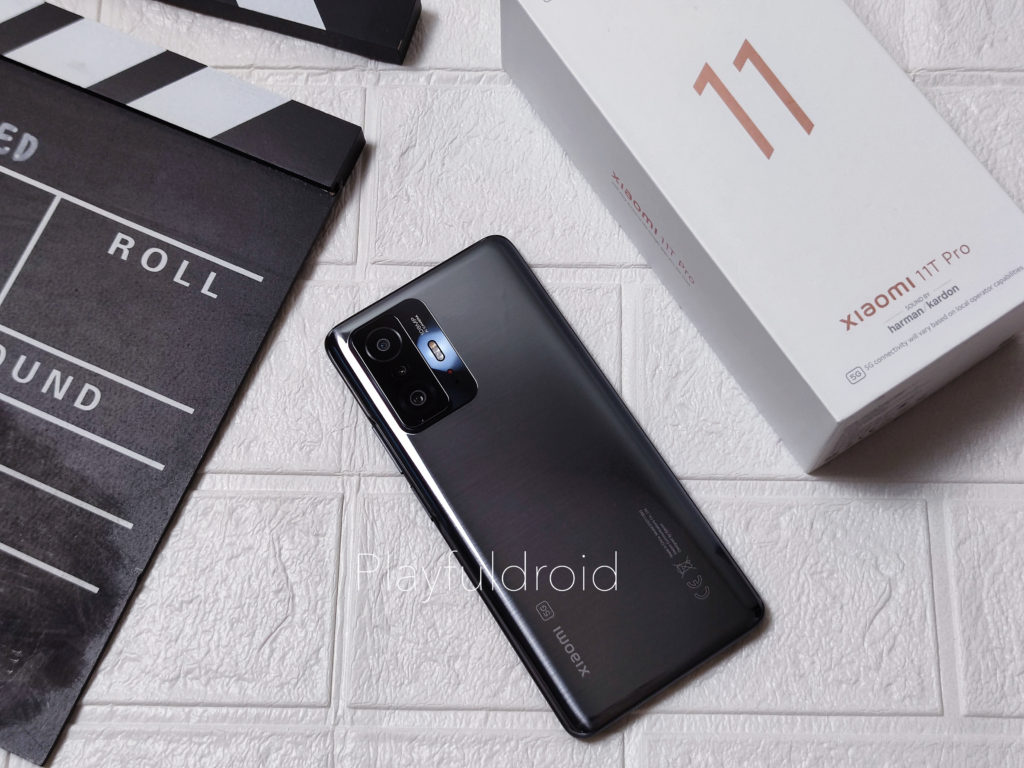
Speaking of ergonomic, the Xiaomi 11T Pro indeed offers an improved handling experience over it’s predecessor thanks to it’s slightly reduced weight from 218 grams to around 204 grams, which puts the phone pretty much on par with other devices within the segment like the OnePlus 9 Pro.
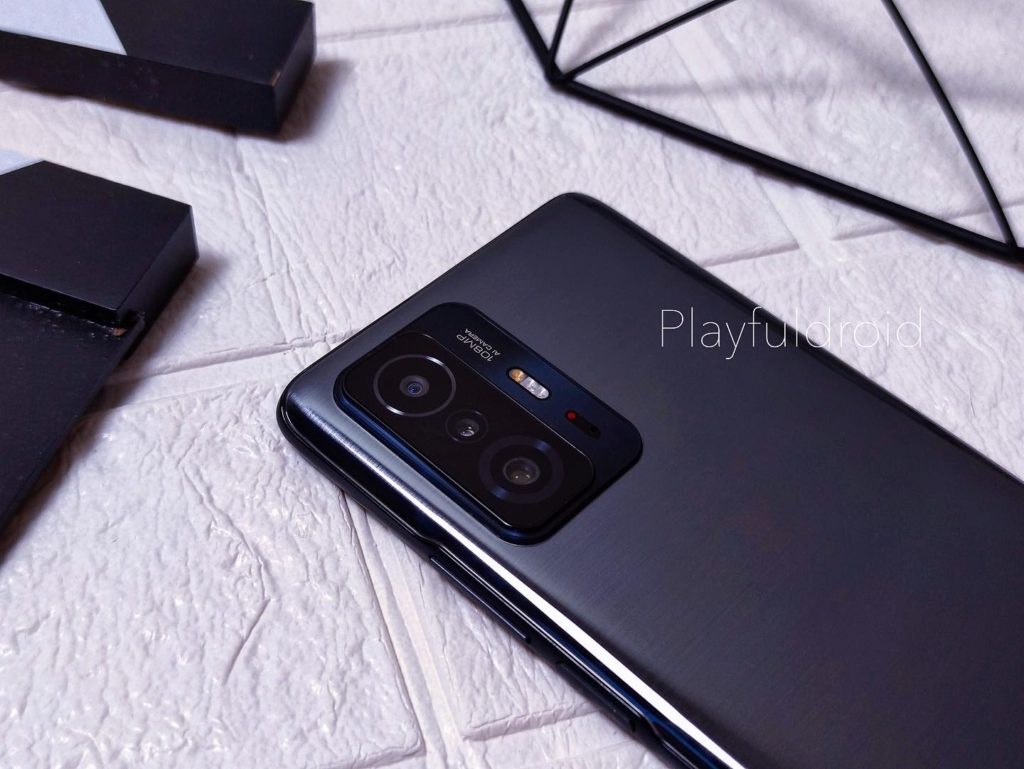
To sweeten up the deal, Xiaomi had also trimmed down the thickness of the phone from 9.3 mm to just 8.7mm – giving the phone a much slimmer outlook as compared to last year’s Mi 10T Pro.
For the Meteorite Gray variant that I received for review, it flaunts a glossy finish which shimmers faintly under the lights. Despite it’s glossy-nature, the phone isn’t exactly a fingerprint magnet as it appears to handle unsightly smudges pretty well.
Durability-wise, the Xiaomi 11T Pro is the first smartphone within the company’s numerical T-series to receive IP53 rating for protection against water splash as well as ingress of dust. This is certainly a great addition on top of it’s sturdy and robust build.
Display
Coming to the frontside of the phone, Xiaomi had shifted the hole-punch cutout from the upper-left corner (on the Mi 10T Pro) to a centralize position instead. However, it’ll still be sticking with a flat panel curve display is generally reserved for the flagship numerical and Mix series smartphones in the global market.
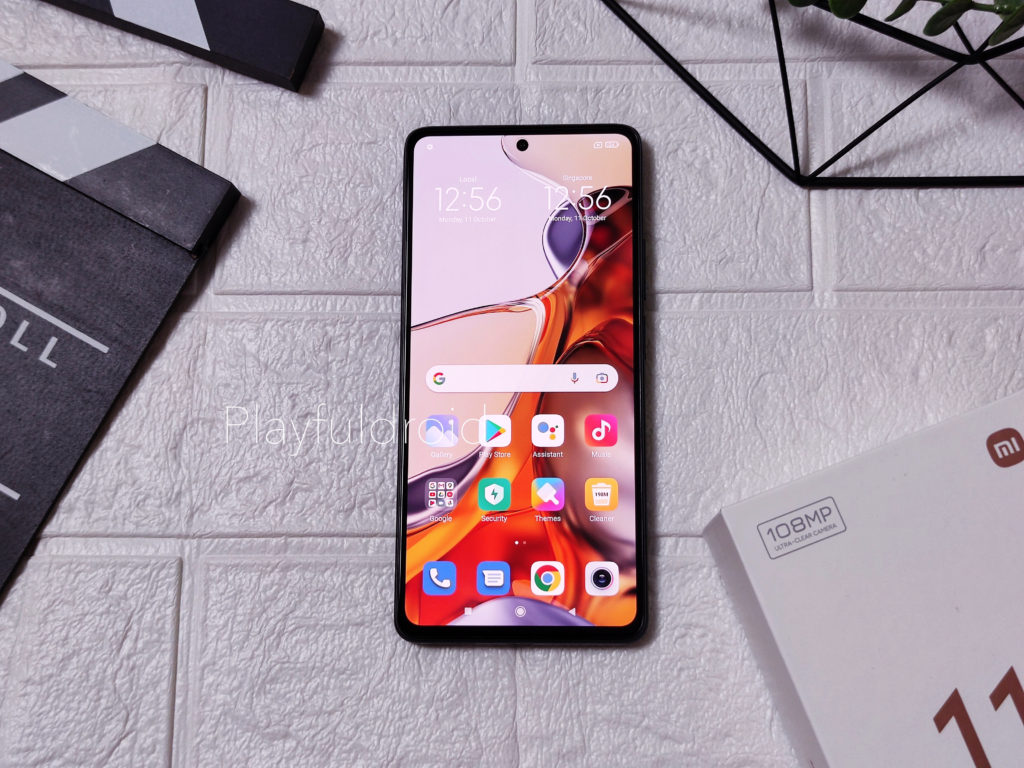
This time round, the most noteworthy upgrade with respect to it’s front display is probably the adoption of a 6.67” AMOLED panel which does a much better job in handling color saturation, resulting in colors that appear more vibrant and vivid.
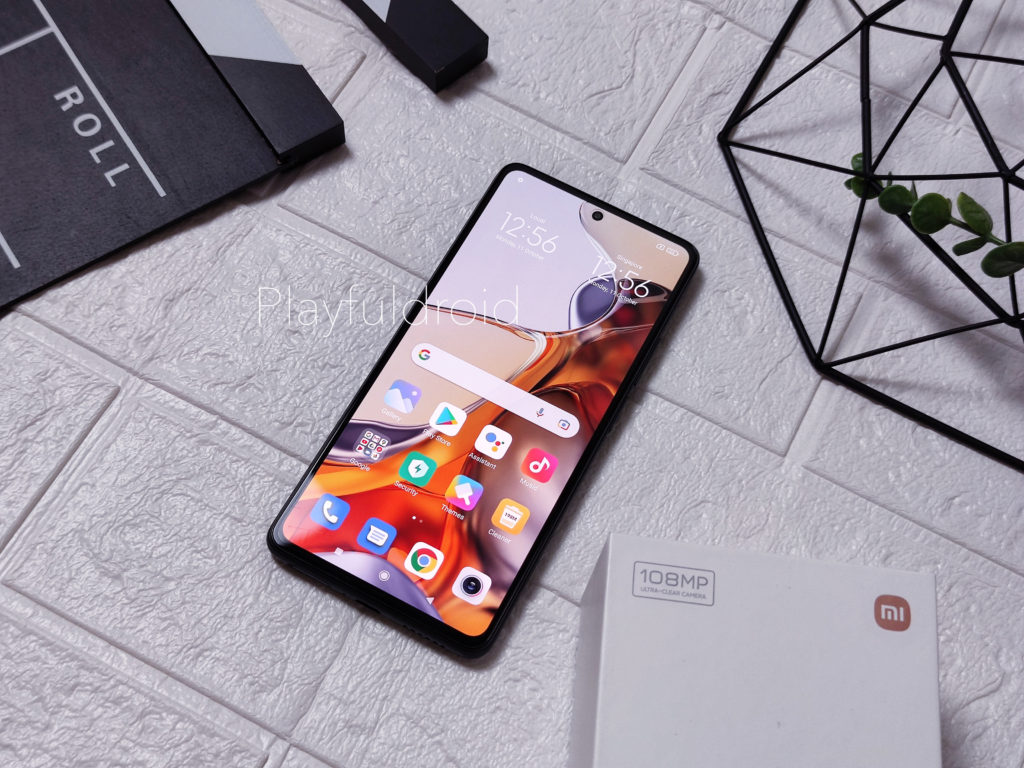
To provide an even more immersive graphical experience for it’s users, it’s front display also brings support for HDR10+ and Dolby Vision which ensure colors are rendered as accurately and realistically as possible – just like what we see in real life.
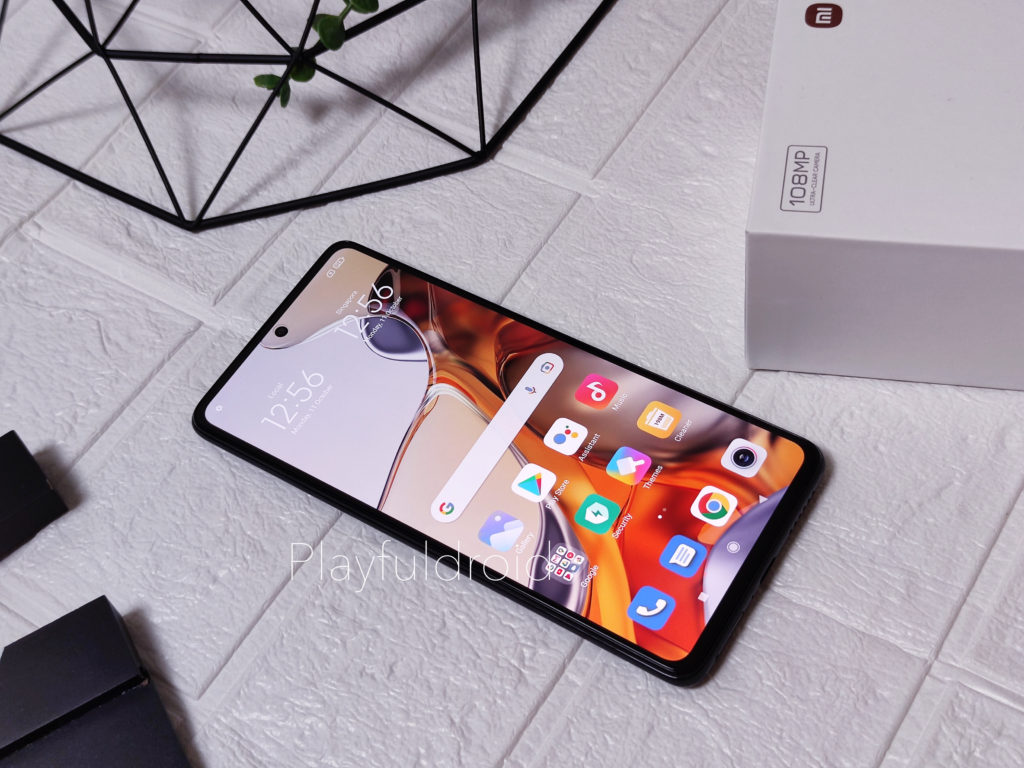
Other than that, the display also looks pretty sharp with a 1080 x 2400 pixels screen resolution, and is blessed with an impressive peak brightness of 1,000 nits to keep the screen visible in a bright environment.
While some Xiaomi fans may dislike the fact that the refresh rate of the Xiaomi 11T Pro had dropped slightly from 144Hz to 120Hz, but the difference goes unnoticeable most of the time.
Also, there aren’t many contents or apps that actually allow you to take full advantage of such high refresh rate which probably explains why majority of the flagship phones settle with a 120Hz refresh rate for the front display.
Performance
Under the hood, the Xiaomi 11T Pro is powered by an octa-core Snapdragon 888 mobile platform – the same chipset that powers the April-launched Xiaomi Mi 11 (Review) flagship.
In terms of benchmark scores, the Snapdragon 888 sits just behind the new Snapdragon 888+ as well as the new Apple A15 Bionic found in the new Apple iPhone 13 Pro (Review). As such, it definitely packs a punch when it comes to performance.
In day-to-day usage, you’ll hardly encounter any tinch of laginess when switching between multiple apps or editing your newly recorded video at high resolution.
For those who love to indulge in mobile gaming, it’s worth noting that the Xiaomi 11T Pro also performs superbly well in this aspect even in more resource intensive game titles like PUBG Mobile or COD Mobile.
To help with sustained performance, the Xiaomi 11T Pro is once again backed by an advanced cooling system to avoid thermal throttling by keeping the phone cool during prolonged gaming sessions.
Of course, if you try to push the phone to it’s limit by gaming under maxed out graphical settings, it can still get slightly warm. However, that’s something I’d experienced across all Snapdragon 888-powered smartphones including the gaming-centric ASUS ROG Phone 5 (Review). Therefore, we can’t discredit the Xiaomi 11T Pro solely on that.
In the memory department, the local variant is equipped with 12GB worth of blazing-fast LPDDR5 RAM as well as 256GB UFS 3.1 storage which are certainly more than sufficient for majority of the users.
Cameras
On the imaging front, the Xiaomi 11T Pro relies on a versatile triple-cam system lead by a 108 megapixels main camera with a decently bright f/1.8 aperture. This will be joint by a pair of auxiliary cameras including an 8 megapixels ultra-wide unit as well as a 5 megapixels telemacro camera.
For it’s S$799 (US$591) asking price, the Xiaomi 11T Pro certainly punches above it’s own weight in terms of it’s photography performance. It’s main camera is able to take advantage of it’s 8-in-1 pixel binning to output photos that look delightful across all lighting conditions.
In bright daylight, you’ll get photos with excellent dynamic range and ample details that are among the best within it’s price range. When HDR mode is toggled on, colors shift toward a more vivid side with deeper contrast that turns a seemingly dull-looking scene into a more lively one.
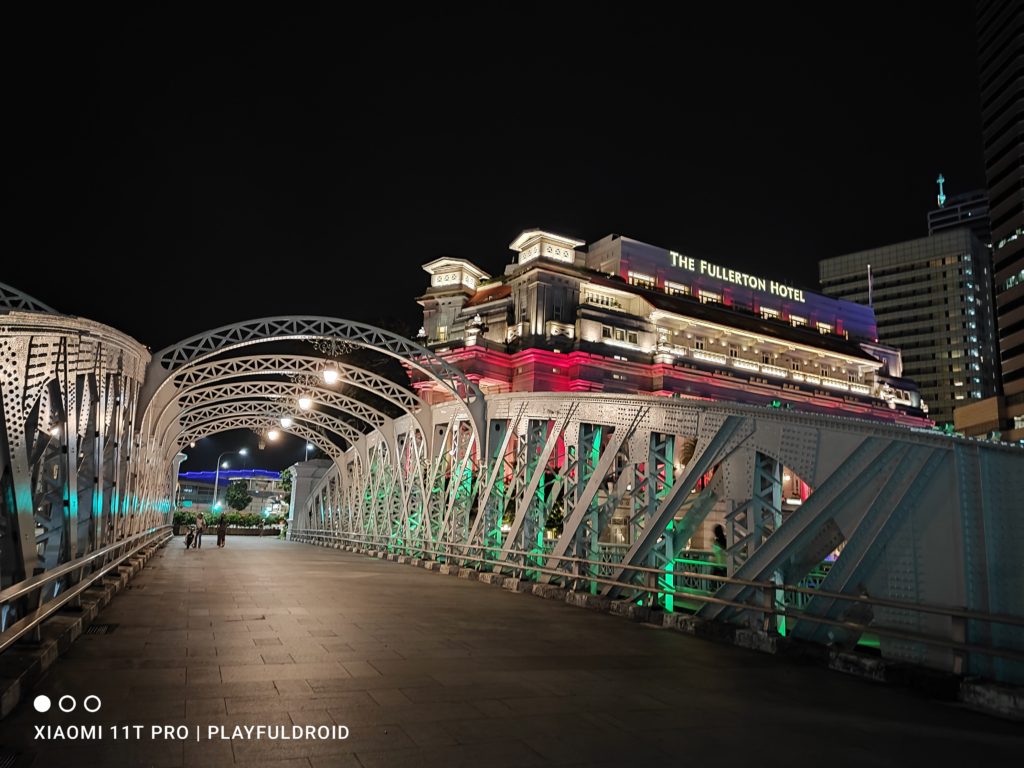

As with any other Xiaomi smartphones, the Xiaomi 11T Pro has a really useful night mode feature that helps to dial up brightness in low-light scenes by improving it’s overall exposure. This results in sharper-looking photos with great shadow details and vibrant colors.

Coming to it’s ultra-wide camera, we are still able to get some really outstanding photos with good dynamic range and details. Also, it does have an acceptable angle of view that allows users to capture gorgeous photos in a different and unique perspective.
As for those who enjoy macro photography, you can rely on either it’s dedicated 5 megapixels telemacro camera or the 2x / 3x digital zoom feature via it’s main camera.
While this may boils down to personal preference, but I tend to rely more on the phone’s digital zoom (as with any other smartphones) since it’s way more convenient to execute than having to keep the frame focused when using a macro camera.


Speaking of digital zoom, the adoption of a hi-res camera means we’ll still be able to get highly detailed photos after the photos were digitally cropped. On top of that, it’s also worth heaping praise on the edge detection capability of the camera that’s capable of picking up even fine-grained features.
Battery & Charging
Xiaomi’s smartphones are always known for their everlasting battery life and the Xiaomi 11T Pro is not an exception. In day-to-day usage, it’s 5,000mAh battery can handle more than a day’s usage with a breeze. In fact, I find it’s battery life even more lasting than it’s Mi 11 counterpart despite being positioned slightly lower than the latter.
Charging-wise, the Xiaomi 11T Pro is backed by a revolutionary 120W fast wired charging solution which is the fastest among all smartphones at the moment. What’s even better is that you also get a 120W charging brick out of the box too. That means you wouldn’t need to spend any extra cash to take full advantage of it’s charging capability.
During my testing, a full charge from a completely flat battery takes around 20 minutes via it’s in-box charger. That’s almost twice as fast as the 65W SuperVOOC 2.0 charging solution used in the OPPO Find X3 Pro (Review), and is definitely an impressive feat for the Chinese smartphone giant.
It’s worth noting however, that the Xiaomi 11T Pro lacks wireless charging support just like it’s predecessors. While this is probably a nice-to-have feature, but it’s definitely not a deal-breaker. Anyway, I hardly sees the need to bring in wireless charging that requires at least twice the time to achieve a full charge, since majority of the users would probably want to leverage the blazing-fast 120W wired charging.
Verdict
The Xiaomi 11T Pro is once again an absolute steal for the price it commands. It hits the right mark in every aspects that matter most to consumers be it the phone’s display, performance, camera system, battery capacity, charging speed, as well as support for the next-generation’s 5G connectivity.
For those who’re in the market for a capable and reliable smartphone that sits below the S$1,000 mark, the Xiaomi 11T Pro is definitely the top few options you should consider – especially if you’re a heavy gamer.
Pricing & Availability
In Singapore, the Xiaomi 11T Pro is available in a single 12GB+256GB memory configuration which will set you back by S$799. Those who’re interested can purchase the device via Xiaomi’s official store on both Shopee and Lazada.
